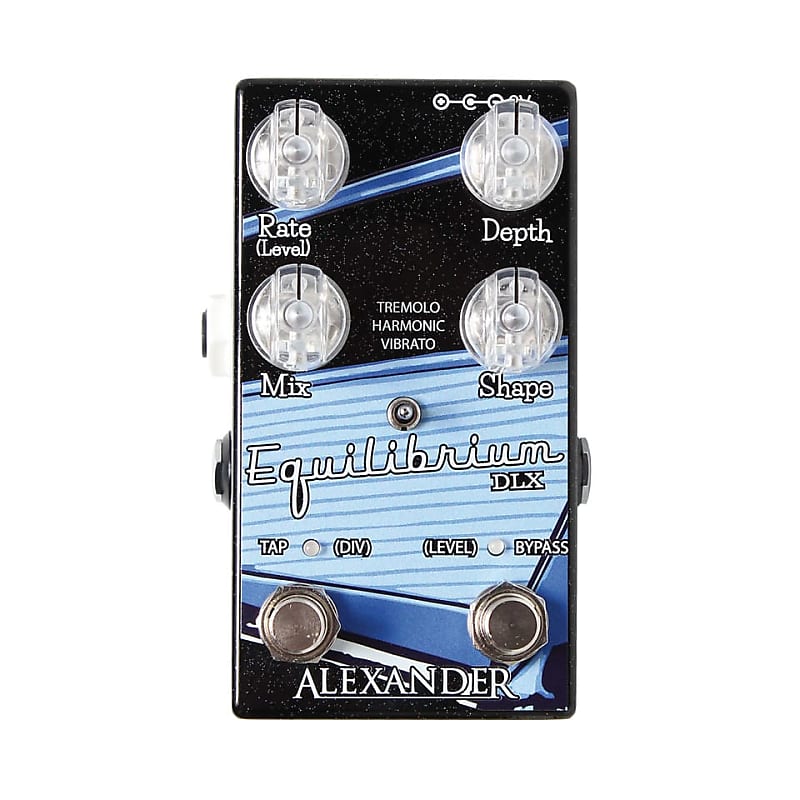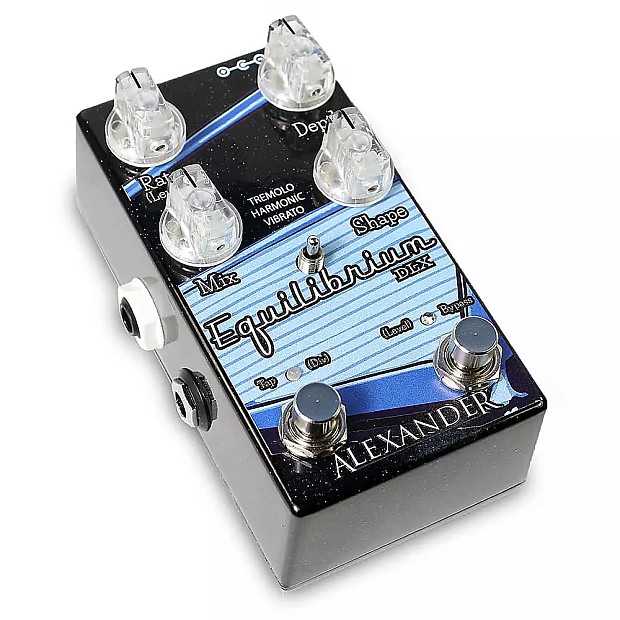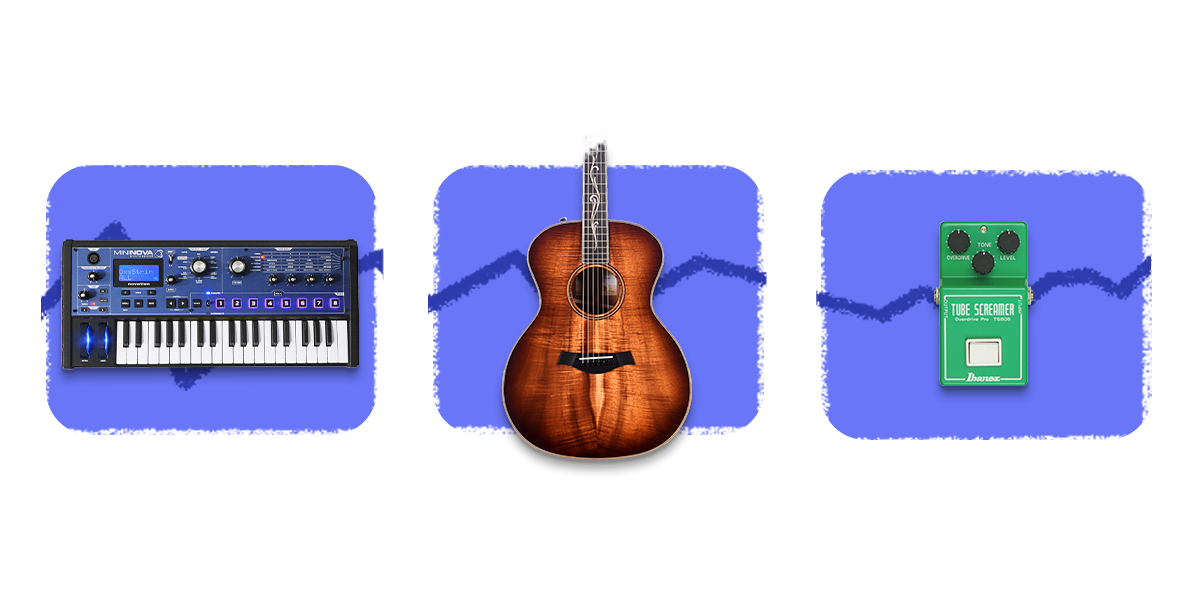Alexander Pedals Equilibrium DLX Tremolo

Own one like this?
Make room for new gear in minutes.Jump To

Own one like this?
Make room for new gear in minutes.Compare 0 Listings
Product Details
Gallery



Product Specs
| Brand | |
| Model |
|
| Finish |
|
| Year |
|
| Made In |
|
| Categories |
Overview
Building on the success of its predecessor, the Alexander Pedals Equilibrium DLX comes packing the same vintage-voiced tremolo with some carefully chosen new features to dramatically expand the unit's functionality. Sporting the same three-mode toggle of the bias tube-like Tremolo, vibrato circuit Harmonic, and Buddy Holly-esque vibrato, this new and improved model also brings a tap tempo division and tap tempo jack into the fold for complete control over your vintage emulation.
Read More ...Video
Price Guide
*Excludes Brand New, B Stock, Fair, Poor, and Non-functioning. Prices exclude shipping and tax/VAT/GST.
Product Reviews
More Information
The aptly named Equilibrium DLX is the follow up to Alexander’s first Equilibrium pedal, with the addition of a few modern appropriations to make it easier to incorporate into a 21st century pedalboard. This time around, Alexander has included a Tap Tempo feature and a few other updates to the circuit and tone of the pedal. There are a few critical parts of the tone and operation of this pedal that both make it and break it. Let’s dive right in.
The Equilibrium represents a synthesis of vintage tone with a couple of new ideas thrown in to make it more palatable to the modern guitarist. The controls here are standard, and not really anything to write home about, as they’ve come to be expected on good modulation units. Where things differ here is in the “Shape” function, where you can control the shape of the waveform. According to Alexander, you can select one of four waveforms; Sine, Ramp Up, Ramp Down, or Square. The change from sine to square was definitely noticeable, but I had a hard time distinguishing between the sine and the ramp modes. The pot is smooth, with very subtle clicks at around 9 and 3 o’clock. I had to refer to the manual to see if there was anything in between those, or if I was panning between different LFO settings. I think I would have liked to see a four position rotary switch here instead, with clear labels so I would know what mode I was on rather than just having to guess somewhere between square and sine waves.
The sounds that can be had are multitudinous, but not so much so that it would make your head spin (unless tremolo or vibrato makes you dizzy). Harmonic mode is a sort of filtered tremolo, and it can easily sound like a Uni-Vibe or the like with the right combination of Depth and Shape. The vibrato is very similar, and skirts sounding seasick or overbearing. Its subtlety is its strong point, and it adds a very unique style of movement to both dirty and clean tones. Again, playing with the Depth, Shape, and Mix controls you can really sculpt any sort of vibrato sound, from a warm and subtle vinyl-like wobble to thick and swampy faux-phase tones. The tap tempo is intuitive enough, but I kept hitting the bypass switch while trying to set the tempo. This was probably due to the weird placement on my pedalboard, but that is easily alleviated with moving it closer to your foot or utilizing the built in remote tap-tempo jack.
Now if the review had ended here, the Equilibrium would have been a fairly decent and well-featured modulation unit, but unfortunately there is one major pitfall that makes it very hard for me to recommend. A lot of pedals are accused of “tone suck,” a phenomenon that I’m sure most of you have experienced. The capacitance in a pedal circuit or the impedance on the output jacks can suck out your high end clarity, leaving you with a dark clean tone even with the pedal bypassed. The Equilibrium gives you the exact opposite, by heaping on the high end into the signal. When engaged, the pedal can sound brittle and a bit piercing on its edge, and adds this artificial high end that really scratched at my ears. Even bypassed, that same brittle high end was introduced to my signal chain, something I did not like at all. Bypassed with drive pedals before, it made the drive sounds unbearably bright, very loud, and difficult to listen to. I suspect this is because of the pedal’s buffered bypass on this pedal, which some more sensitive drives and fuzzes will not like.
PROS:
Flexible vintage inspired modulation sounds in a versatile package that tries to pack everything you could reasonably want in a pedal.
CONS:
Buffered bypass can make your signal chain sound brittle and overly-bright. “Shape” knob could do with clearer labeling.

